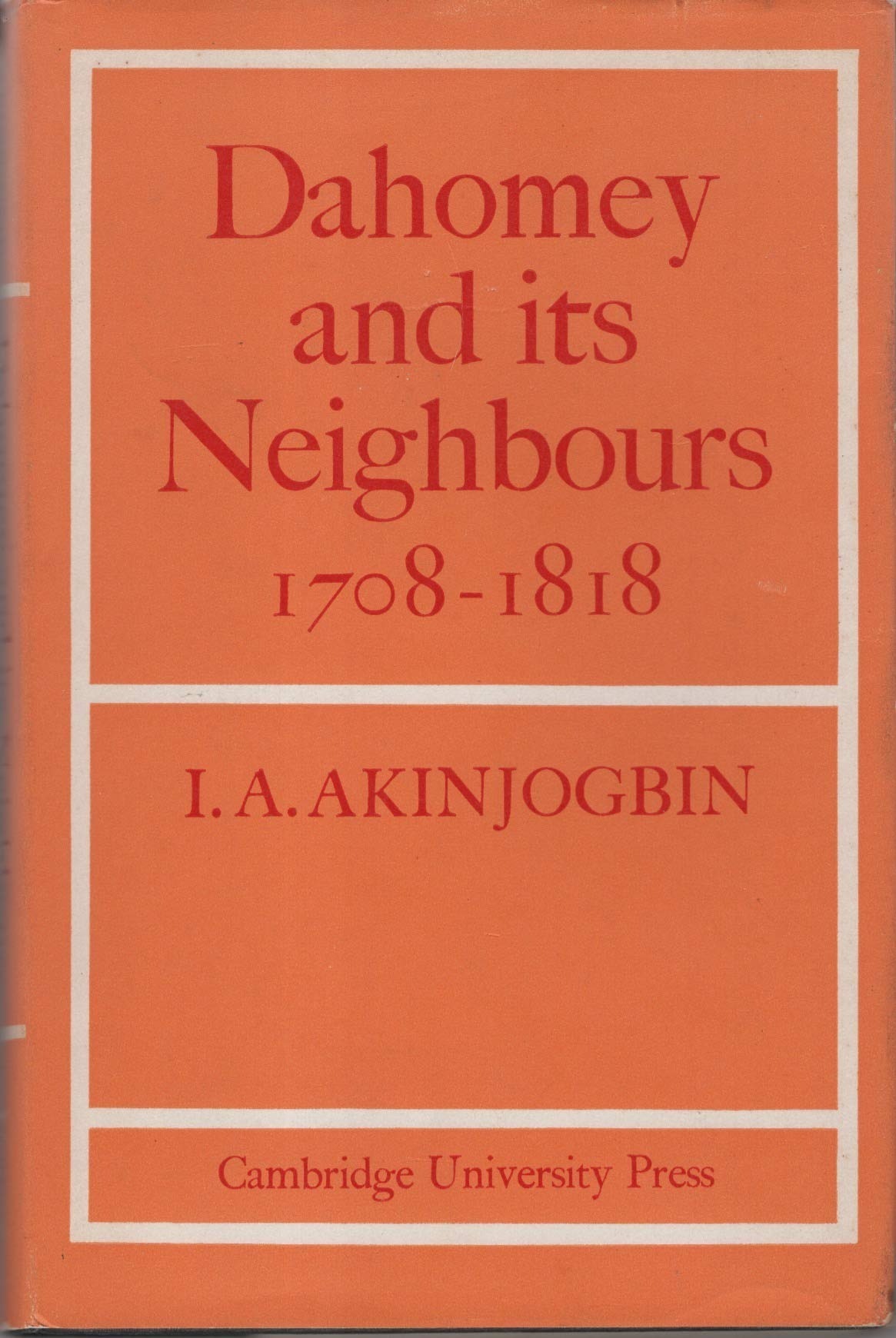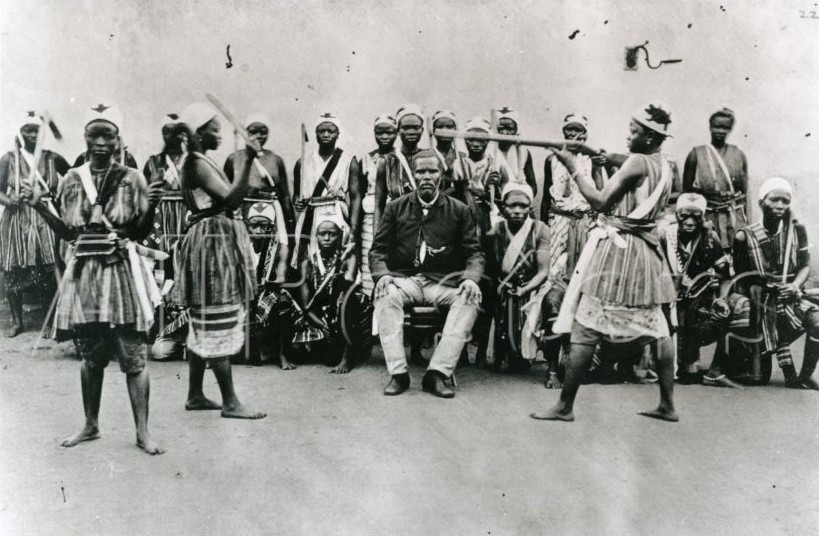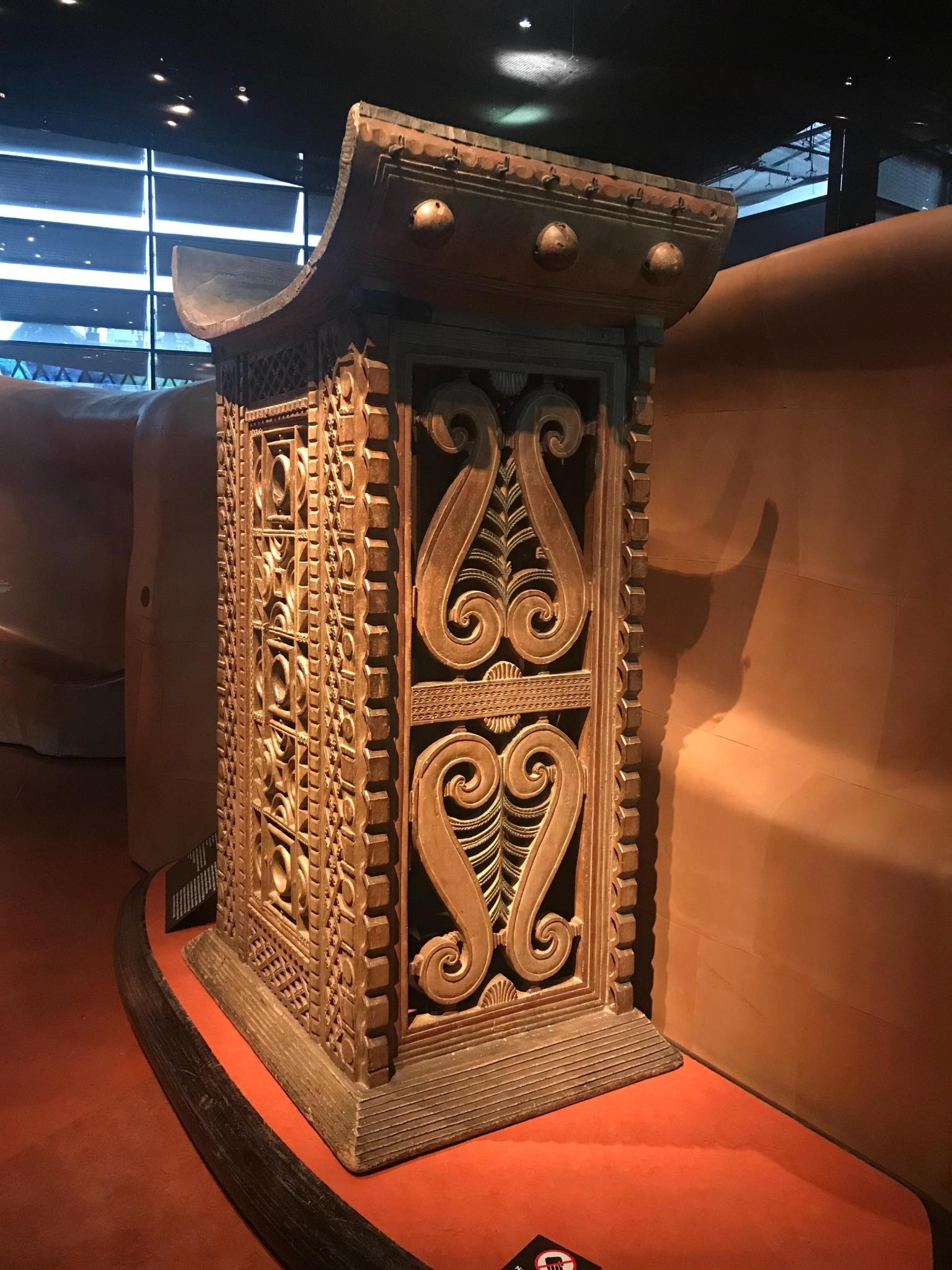The Agodjie were an all-female regiment that emerged in the Kingdom of Dahomey during the eighteenth century. Dahomey was a West African centralized and militarized kingdom in what is today the Republic of Benin. In 1727, during the era of the Atlantic slave trade, Dahomey conquered the Kingdom of Hueda, and gained access to the sea. Through this conquest, the kingdom controlled the port of Ouidah, which between the early 1500s and 1866 was the second busiest slave-trading port, only behind Luanda, in West Central Africa. To explore this story in more detail, check the section History of Dahomey. Nigerian historian Isaac Adeagbo Akinjobgin wrote one of the first monographs on the history of Dahomey. American anthropologist Melville Herskovits also published a two-volume book on Dahomey.

The population of Dahomey were men and women identified as Fon. Fon is a Gbe language, still spoken today by nearly two million people in the Republic of Benin. As the movie The Woman King underscores, royal women were not mere spectators of the developments of Dahomey. During a short period of time in the early eighteenth century, Tassi Hangbé, the daughter of King Huegabja became either Dahomey’s regent or the queen (we do not know exactly), after her own brother died and a new king was appointed. The origins of the Agodjie are probably associated with Hangbé, as she may have created a guard formed just by women. To know more about the Agodjie, visit the section Agodjie, women warriors and Fon women. As you will see, several scholars wrote about Fon women and the Agodjie. Probably, the most well-known book focusing on Fon royal women is Edna G. Bay’s Wives of the Leopard. Stanley B. Alpern also wrote the popular book Amazons of Black Sparta about Dahomey women warriors. Other scholars such as Robin Law and Suzanne Preston Bllier also wrote several other articles and chapters about the Agodjie, while other scholars in the Republic of Benin and in France also studied these women warriors. Ana Lucia Araujo explored the story of Na Agontimé, the mother of King Guezo, who was sold and sent into slavery to Brazil. As scholar Pierre Verger has argued, Na Agontimé was very probably the founder of the Candomblé temple Casa das Minas in São Luís do Maranhão in Brazil.

The movie The Woman King shows Agodjie gathered around altars and making offerings of food and drinks to their deceased warrior mates. In one scene, Amenza (Shelia Atim) consults the Ifa for Nanisca (Viola Davis). Although Dahomean religion is not perfectly portrayed in the movie, it offers us the opportunity to know more about the Vodun religion practiced in Dahomey. As explained by art historian Suzanne Preston Blier, Vodun is a religion that honors several deities and (royal) ancestors. In addition to the worship of numerous deities, Vodun is characterized by trance and spirit possession. Vodun followers and initiates dance, sing, and play musical instruments. There is also many rich forms of art associated with Vodun religion. To know more check the segment Vodun religion and Art, artifacts, human remains.
Dahomey was not isolated. Its rulers sought to expand the kingdom’s borders. After conquering the Kingdom of Allada in 1724 and the Kingdom of Hueda in 1727, Dahomey continued fighting its neighbors, including the Mahi in the north, and Oyo in the west. In the movie, the story revolves around the Dahomeyan conflict with Oyo. You can learn more about the Oyo in our Oyo empire, Kingdom of Oyo section. Although the history of Dahomey and of the Agodjie are not synonyms with the history of the Atlantic slave trade and slavery, most prisoners of these wars were transported to the coast where they were sold and forced to board slave ships. Most ships that left from Ouidah after 1727 transported enslaved people to Brazil. But several slave ships also carried enslaved Africans to Saint-Domingue and other parts of the Americas. In 1860, the slave ship Clotilda transported from Ouidah more than 100 enslaved people to Mobile in Alabama. Clotilda is known as the last slave ship that carried enslaved Africans to the United States, where the African slave trade had been made illegal in 1808. In 1927, African-American author and anthropologist Zora Neale Hurston interviewed Oluale Kossola (Cudjo Lewis), one of the captives brought to Alabama on board the Clotilda. His story was recently published in Barracoon: The Story of the Last “Black Cargo. Kossola’s story, and the Clotilda’s story, were also explored by historian Sylviane A. Diouf in her book Dreams of Africa in Alabama: The Slave Ship Clotilda and the Story of the Last Africans Brought to America.

A number of enslaved Africans who were transported from Ouidah to Brazil, especially to Bahia, were able to purchase their freedom during the nineteenth century. After the Malê slave rebellion of 1835 failed, Brazilian authorities sentenced Africans who alleged participated in the revolt with deportation to the Bight of Benin. Transported to ports such as Ouidah and Lagos, these men and women joined a community of Brazilian slave traders and freedpeople that existed in the region since the eighteenth century. Indeed, Brazilian slave traders, including some who were formerly enslaved, were the majority of the slave traders based in Ouidah during the nineteenth century. Therefore, slave traders who spoke Portuguese like Santo Ferreira (Hero Fiennes Tiffin) and Malik (Jordan Bolger) who are featured in the movie existed in significant numbers in Ouidah until the 1860s. To know more check the sections Dahomey and the Atlantic Slave Trade and Afro-Brazilians in the Bight of Benin.
The history of West African women does not start or end with the Agodjie. Yet, the experience of these women warriors can help us better understand the history of West African women and Black women in the Americas. To know more check the section African women in the era of the Atlantic slave trade.
What happened to the Agodjie? After the end of the Atlantic slave trade to the Americas in the 1860s, France invaded Dahomey in 1890. Dahomey became a French colony in 1894. French officials took thousands of objects, artifacts, and artworks from Dahomey during the war of conquest and colonization. To this day, most of these items are scattered in museums in France, other European countries, and in the United States. After its independence from France, Dahomey was renamed Republic of Benin. The country has been memorializing the Atlantic slave trade since the early 1990s. The palaces of Abomey featured in The Woman King are listed in the UNESCO World Heritage List since 1985. The UNESCO Project The Routes of Enslaved Peoples (former Slave Route Project) was launched in Ouidah in 1994. The Republic of Benin’s cities of Porto-Novo, Cotonou, Ouidah, and Abomey feature several monuments, memorials, and museums telling Dahomey’s history and the painful history of the Atlantic slave trade. These landmarks also tell the story of Vodun and the Dahomey women warriors. Moreover, in 2021, France returned to Benin more than twenty-six objects taken from the royal palaces of Abomey during the wars of conquest. Among these objects is the throne of King Guezo (played in The Woman King by John Boyega). Benin is creating a new museum in Abomey, where the royal palaces still stand, to show these treasures.
We hope that this syllabus, and the movie The Woman King, will drive us to better understand the history, the culture, the art, and the religions of Dahomey. Through these materials, we hope to spark curiosity and encourage many of you to learn about the history of West Africa.